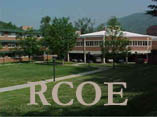|
Cover Page
T.O.C by Artifact
T.O.C. by
Tech Competency
T.O.C. by
INTASC Principles
Artifact #1
Artifact # 2
Artifact # 3
Artifact # 4
Artifact # 5
Artifact # 6
Artifact # 7
Artifact # 8
Artifact # 9
Artifact # 10
Artifact # 11
Artifact # 12
Artifact # 13
Artifact # 14
Artifact # 15
ISTE National
Educational Technology Standards
INTASC
Principles
References |
Name
Media
Literacy Ethnography was a small group Power Point presentation that
addressed media influences on students at Beech
MountainElementary School
.
Context
In the fall of 2001,
my Integrating Media and Technology into Teaching course went into schools
and investigated how media influences and affects children. I
worked with three other peers in my class who were also attending
Beech Mountain
Elementary School for our Internship. We
worked together to observe and collect information that demonstrated how
media was a large part of studentsí lives. As
a method of obtaining evidence of media in the schools we brought a digital
camera to Beech Mountain Elementary
School and took pictures of school supplies,
clothing, shoes, drink machines and miscellaneous objects. After
collecting several images from the school, we created a power point presentation. We
categorized the pictures, as mentioned above, and then put a lot of focus
into the way the pictures were displayed on screen. The
pictures came in from different sides, spiraling and in varied sizes. Once
the Power Point was completed, my group presented the product to the rest
of our classmates and explained our discoveries.
Impact
As a teacher I could use Media Literacy Ethnography
to make students and teachers more aware of media influences.
Students could observe my production from
BeechMountain
Elementary School and then create their own
production about media influences in their personal lives and in their
school. Instead of having the instruction
come directly from the teacher, students could learn so much from their
own investigation and technology product that they design to present the
information to the class. As far
as using Media Literacy Ethnography to make teachers aware of media influences,
they could observe my presentation as a form of awareness regarding what
teachers are competing with for students' interest.
Teachers could even expand this project by having their classes participate
in the project.Students and teachers
would not only benefit from becoming informed about media influence in
the school and with children, but would also meet several North Carolina
Standard Course of Study requirements addressing technology, language arts
and writing.
Alignment
Media
Ethnography aims to learn more about media influences on children within
the school setting. Different
aspects of how media was represented were considered, such as clothing
and school supplies. The method
used to collect data was the digital camera.
Using the digital camera allowed students to be caught in normal situations,
demonstrating evidence that was not determined because of their awareness
of the project. Students were
not informed of the project ahead of time other than their need to have
a permission slip to be photographed.
The data collected was presented through photographs and a survey.The
purpose behind the Media Ethnography project was to make us, as future
teachers, more aware of the impact and influence of media in studentsí
lives. (Technology Competency IV. B).
Going into the school and investigating the influence media plays in children's
lives will be helpful to myself and my class because we will be aware of
what interests and motivates our children. Media is evident at all
grade levels, but the type may vary. For instance, cartoons were
more popular with younger children, whereas music stars were more popular
with the older children. Knowing information like this can help teachers
prepare lessons for students. Teachers must stimulate intellectual,
social and personal growth and knowing what students like will only help
provide this. Teaching is like putting on a show everyday that will
have students learning and enjoying themselves. (INTASC
Principle 2) . Media Ethnography was also aimed at supporting
the best learning for children by exposing our discoveries to others.
In class, the three small groups that were designated at different schools
shared their findings by Power Point or web page to the rest of the class.
Then, at an end-of-semester meeting with teachers and principals from our
cooperating schools, our class shared our Media Ethnography projects.
Not only was the work shared with everyone, but the teachers and principals
were also made aware that the influences of media must be considered in
order to provide the best learning for children.
(INTASC Principle 10)
|
